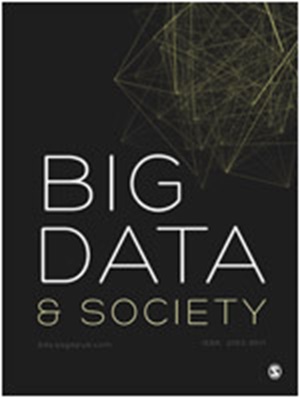The visible body and the invisible organization: Information asymmetry and college athletics data
IF 5.9
1区 社会学
Q1 SOCIAL SCIENCES, INTERDISCIPLINARY
引用次数: 0
Abstract
Elite athletes are constantly tracked, measured, scored, and sorted to improve their performance. Privacy is sacrificed in the name of improvement. Athletes frequently do not know why particular personal data are collected or to what end. Our interview study of 23 elite US college athletes and 26 staff members reveals that their sports play is governed through information asymmetries. These asymmetries look different for different sports with different levels of investment, different racial and gender makeups, and different performance metrics. As large, data-intensive organizations with highly differentiated subgroups, university athletics are an excellent site for theory building in critical data studies, especially given the most consequential data collected from us, with the greatest effect on our lives, is frequently a product of collective engagement with specific organizational contexts like workplaces and schools. Empirical analysis reveals two key tensions in this data regime: Athletes in high-status sports, more likely to be Black men, have relatively less freedom to see or dispute their personal data, while athletes in general are more comfortable sharing personal data with people further away from them. We build from these findings to develop a theory of collective informational harm in bounded institutional settings such as the workplace. The quantified organization, as we term it, is concerned not with monitoring individuals but building data collectives through processes of category creation and managerial data relations of coercion and consent.有形主体与无形组织:信息不对称与高校体育数据
优秀运动员被不断地跟踪、测量、评分和分类,以提高他们的表现。以改进的名义牺牲隐私。运动员经常不知道为什么某些个人数据被收集,或者是为了什么目的。我们对23名优秀的美国大学运动员和26名工作人员的访谈研究表明,他们的体育活动受到信息不对称的支配。这些不对称在不同的体育项目、不同的投入水平、不同的种族和性别构成以及不同的表现指标中表现不同。作为具有高度分化的子群体的大型数据密集型组织,大学体育是构建关键数据研究理论的绝佳场所,特别是考虑到从我们身上收集到的最重要的数据,对我们的生活影响最大,往往是集体参与特定组织环境(如工作场所和学校)的产物。实证分析揭示了这种数据机制中的两个关键矛盾:高地位运动的运动员(更有可能是黑人)在查看或质疑个人数据方面的自由相对较少,而运动员通常更愿意与远离他们的人分享个人数据。我们从这些发现出发,发展了一种有限制度环境(如工作场所)中的集体信息伤害理论。我们称之为量化的组织,它关注的不是监控个人,而是通过类别创建和强制与同意的管理数据关系的过程来构建数据集体。
本文章由计算机程序翻译,如有差异,请以英文原文为准。
求助全文
约1分钟内获得全文
求助全文
来源期刊

Big Data & Society
SOCIAL SCIENCES, INTERDISCIPLINARY-
CiteScore
10.90
自引率
10.60%
发文量
59
审稿时长
11 weeks
期刊介绍:
Big Data & Society (BD&S) is an open access, peer-reviewed scholarly journal that publishes interdisciplinary work principally in the social sciences, humanities, and computing and their intersections with the arts and natural sciences. The journal focuses on the implications of Big Data for societies and aims to connect debates about Big Data practices and their effects on various sectors such as academia, social life, industry, business, and government.
BD&S considers Big Data as an emerging field of practices, not solely defined by but generative of unique data qualities such as high volume, granularity, data linking, and mining. The journal pays attention to digital content generated both online and offline, encompassing social media, search engines, closed networks (e.g., commercial or government transactions), and open networks like digital archives, open government, and crowdsourced data. Rather than providing a fixed definition of Big Data, BD&S encourages interdisciplinary inquiries, debates, and studies on various topics and themes related to Big Data practices.
BD&S seeks contributions that analyze Big Data practices, involve empirical engagements and experiments with innovative methods, and reflect on the consequences of these practices for the representation, realization, and governance of societies. As a digital-only journal, BD&S's platform can accommodate multimedia formats such as complex images, dynamic visualizations, videos, and audio content. The contents of the journal encompass peer-reviewed research articles, colloquia, bookcasts, think pieces, state-of-the-art methods, and work by early career researchers.
 求助内容:
求助内容: 应助结果提醒方式:
应助结果提醒方式:


